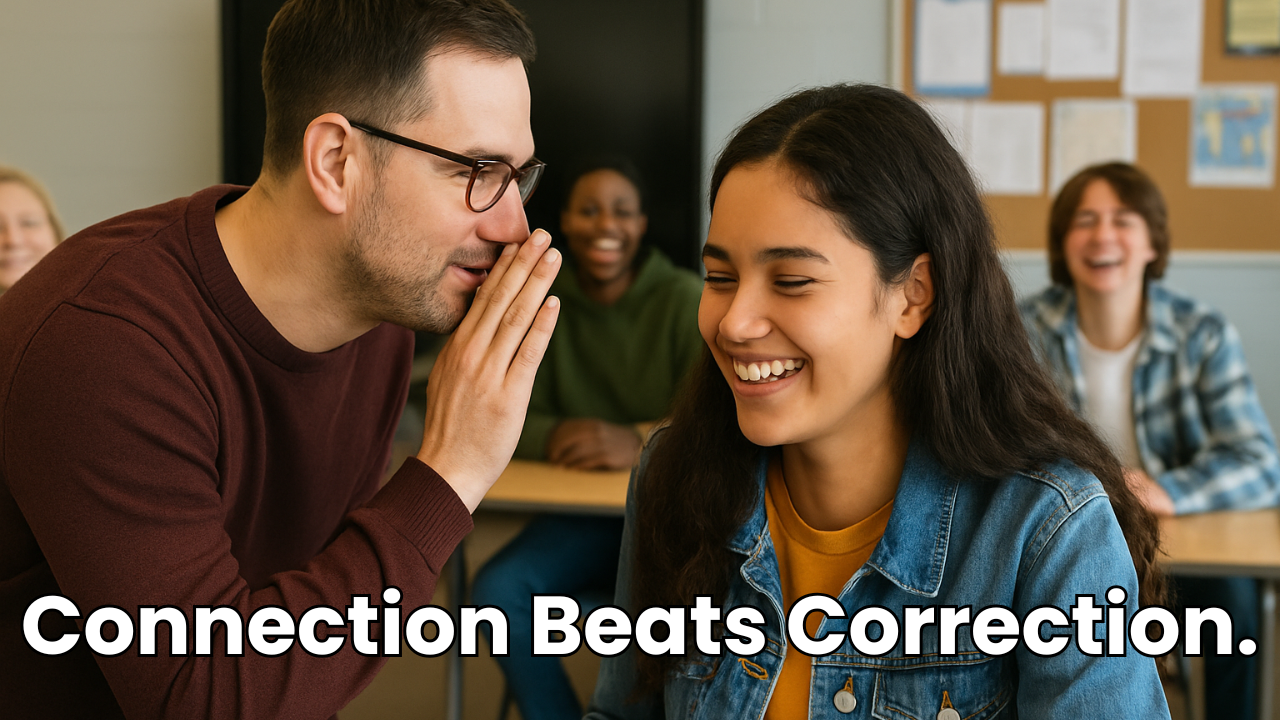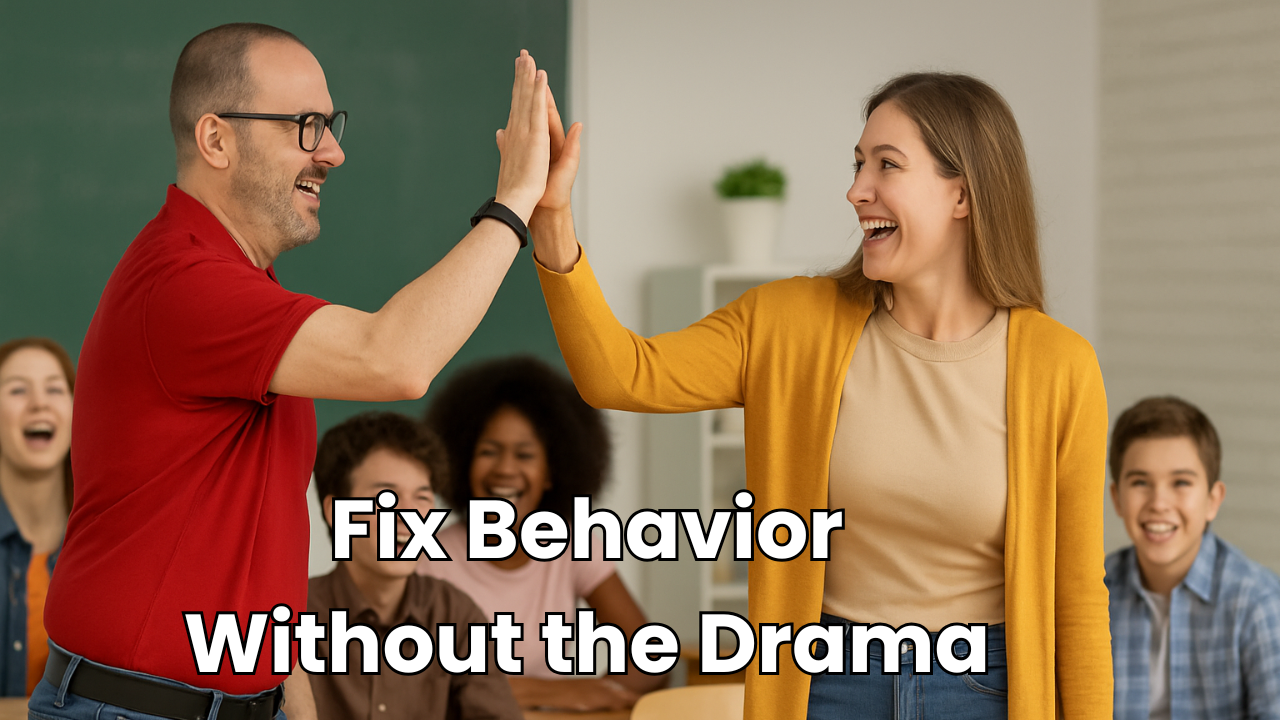
Feedback is key to student success, but it can be hard to give it in a way that's both meaningful and manageable. What if you could provide powerful, innovative feedback that’s not only easy but actually boosts learning?
In this article, I’ll share three simple strategies that will supercharge your feedback process: giving specific, timely feedback, using student self-assessment to engage learners, and leveraging tech tools to save time while personalizing feedback. These are quick to implement and guaranteed to get results.
Stick around to see how these easy-to-use strategies can fuel learning and transform your classroom—without adding extra work!
1. Use Specific, Timely Feedback to Drive Immediate Improvement
The power of feedback lies in its ability to give students a clear sense of direction—what they did right, where they went wrong, and, most importantly, how they can improve. However, the timing and specificity of feedback are crucial to its effectiveness. Providing feedback immediately after a formative task or during moments when students are struggling can drive far more improvement than waiting until the end of a unit or grading period.
Why Specific and Timely Feedback Matters
When students receive feedback right after completing a task, they’re still in the mindset of the learning process. Their memory of what they did is fresh, and they’re more likely to act on the suggestions you give. This is especially important when students face challenges—they need guidance right away so they can avoid developing bad habits or misunderstandings.
Specific feedback is equally important. A simple “Good job!” or “Try harder next time” doesn’t give students much to work with. Instead, focus on concrete actions they can take. For example, instead of saying, “Your verb tenses are off,” try, “I noticed you struggled with the past tense here—remember to use the -ed ending for regular verbs. Let’s practice it together.”
Practical Ways to Implement Specific, Timely Feedback
So, how do you make specific, timely feedback work in a busy classroom? Here are a few easy strategies:
- Exit Tickets: At the end of each lesson, ask students to complete a quick, 1-2 question “exit ticket” that you can review on the spot. This gives you a snapshot of where they stand, and you can give targeted feedback the very next day. Even better, you can address common errors with the whole class right away.
- Mini-Conferences: While students work on a task, hold brief, one-on-one “mini-conferences” with each student. In just a minute or two, you can offer personalized feedback that helps them make real-time improvements.
- Peer Review with Teacher Oversight: Set up structured peer review sessions where students give feedback to each other. By providing a simple rubric, students can give specific pointers. You can then oversee the process and chime in with timely suggestions as necessary.
Quick Win:
One of the quickest wins for providing specific and timely feedback is having “on-the-spot correction” moments during class. For example, while circulating the room, if you notice a student struggling with a concept, you can offer a suggestion or correction immediately. It helps students avoid reinforcing mistakes and gives them the tools to improve right away.
2. Incorporate Student Self-Assessment for Greater Engagement
Let’s be honest—students can’t always rely on us to guide their learning. The goal is for them to become independent learners, and self-assessment is a powerful tool to get them there. When students reflect on their own work, they internalize feedback in ways that are far more meaningful than when it’s just coming from us.
Why Student Self-Assessment Works
When students assess their own progress, they’re actively engaged in the learning process. This doesn’t mean they’re just checking off boxes; instead, they’re developing critical thinking skills, understanding learning objectives more deeply, and gaining confidence as they recognize areas where they’ve improved.
Self-assessment also gives students a sense of ownership over their learning. When they’re aware of what they need to work on and why, they’re more motivated to improve. It can shift the classroom dynamic from teacher-driven to student-centered, which can be particularly empowering for older students.
Practical Ways to Incorporate Self-Assessment
Here are some easy ways to integrate self-assessment into your classroom:
- Checklists or Rubrics: Provide students with a simple rubric or checklist before they start an assignment. As they work, they can assess their progress against specific criteria, helping them stay on track and ensuring they know exactly what’s expected.
- Reflection Journals: At the end of each week, have students write a brief reflection about what they’ve learned, what they found challenging, and what they plan to focus on next. These journals help students internalize feedback and give you insight into their learning process.
- Traffic Light System: Implement a “traffic light” system where students self-assess their understanding of a concept after a lesson—green for full understanding, yellow for partial understanding, and red for needing help. This gives you quick insight into who needs additional support and empowers students to reflect on their learning.
Quick Win:
For an easy win, start with a “mid-task check-in” during longer assignments. Ask students to pause and reflect on their progress by answering a few self-assessment questions: What’s going well? What do I still need to work on? It’s a simple, low-effort way to get students to take ownership of their learning and improve their outcomes.
3. Leverage Technology for Instant, Personalized Feedback
Let’s face it—grading and giving feedback can eat up a lot of time. But with today’s technology, there are easy-to-use tools that can take much of the load off your shoulders while providing students with instant, personalized feedback.
Why Technology is a Game-Changer for Feedback
Using tech tools allows you to provide students with quick, individualized responses that help them know exactly where they stand. The best part? Many of these tools give automated feedback, meaning students get immediate insights without you having to manually grade each task.
Technology also adds an element of fun and engagement, especially for today’s students who are so comfortable with digital platforms. It keeps learning interactive and helps ensure that feedback is relevant and timely.
Practical Tools to Start Using Today
Here are some tech tools that can help you provide quick, effective feedback:
- Google Forms: Set up quizzes that give students instant feedback on their answers. You can create multiple-choice, short-answer, or even self-assessment surveys. Best of all, Google Forms will automatically grade certain question types, saving you time while providing students with immediate results.
- Kahoot or Quizizz: These platforms turn assessment into a game-like experience, providing feedback in real time as students answer questions. They’re perfect for formative assessments, and students love the interactive, competitive aspect.
- Edpuzzle: This tool allows you to insert questions and comments into videos, turning passive video watching into an active learning experience. Students can get immediate feedback on their understanding as they watch, helping them engage more deeply with the material.
- Feedback Apps: Tools like Kaizena allow you to record audio feedback or leave voice notes for students, giving them personalized insights that feel more direct and engaging than written feedback. It’s quick for you and feels more interactive for them!
Quick Win:
For a fast win, try using Google Forms for quick formative assessments. Create a simple quiz that checks for understanding after a lesson, and let Google Forms handle the grading. It’s an efficient way to provide immediate feedback and give students a sense of accomplishment.
Conclusion
Providing effective feedback doesn’t have to be a daunting, time-consuming task. With these simple and innovative strategies—offering specific, timely feedback, incorporating student self-assessment, and leveraging technology for instant responses—you can help your students improve quickly and meaningfully.
Remember, feedback isn’t just about correcting mistakes; it’s about guiding students in a way that boosts their confidence, helps them see their own progress, and motivates them to keep going. Whether you’re a seasoned teacher or just starting out, these strategies will help you create a learning environment where feedback truly drives success.
Key Takeaways
- Specific, timely feedback is essential for student improvement – Giving feedback right after students complete a task or when they struggle allows them to make immediate corrections and stay motivated.
- Student self-assessment fosters independence – Encouraging students to reflect on their own progress through rubrics, checklists, or reflection journals helps them take ownership of their learning and engage more deeply.
- Technology simplifies and personalizes feedback – Using tools like Google Forms, Kahoot, or Edpuzzle can automate feedback, making it quicker for teachers while keeping students engaged with instant, relevant responses.
- Small adjustments in feedback strategies can have a big impact – Simple changes like exit tickets, mini-conferences, or mid-task check-ins can create more meaningful and actionable feedback without overwhelming the teacher.
- Feedback isn’t just correction; it’s a tool for growth – Effective feedback should guide students by highlighting what they can improve and how, building their confidence and encouraging continuous learning.
If you’re looking for more ways to improve classroom management and engagement, check out our Dynamic Discipline Course! It’s packed with actionable tips to help you build stronger relationships with your students, engage them more effectively, and create a positive learning environment. Plus, you’ll get exclusive resources and community support. Don’t miss out—register here and take your classroom management to the next level!



